A recent Twitter spree with noise, Heidi, and many others (most prominently, Rob Jorgensen, Shawn, fish, and Jack Gavigan) has me wanting to share a few thoughts (and lots of photos) about preparation of delicious food. Specifically, steak.
Now, Jack has already made this fine, famous video available and it covers some of the basics perfectly well. In short: if you get a proper-quality meat, it doesn’t need much (if any) adulteration. The first rule of cooking any fine food (especially good fish or good meat) is “do no harm” and that predominantly comes down to…
- don’t over-season
- don’t over-fire
For this reason, many of us in the above list now opt to sous-vide our steaks (and other protein) since it’s much harder (some would say, near-impossible… unless you’re a colossal assbutt) to over-cook and thus ruin great meat if you’re using a water immersion bath. If you are not familiar with sous-vide cooking, this video conveys the key details pretty quickly.
Essentially, in conventional cooking, food is exposed to much higher temperatures (externally) than one needs. In order to get a steak to 125°F internally, it’s over a fiery grill or on a hot stove at anywhere from 300° to 600° … if you don’t time things just right, you’re facing tragically over-cooked meat. In sous-vide cooking, food is immersed in precision-heated water so that it reaches a target temperature without going over. The food is placed in a sealed bag so that it’s not in direct contact with the water bath. This allows the food to retain all its natural juices, vitamins, and flavors. (Sous-vide prepared foods such as steak are finished in a hot pan for searing and generating a proper Maillard reaction, maximizing flavor)
Once only the domain of restaurants and high-class chefs (mostly due to the size and cost of immersion circulators) now home users can select from a number of very affordable and very easy-to-use sous-vide cookers. Top among them are:
- The Anova (this is what I own)
- The Sansaire
- The soon-to-be released Joule by Chef Steps
In addition to a sous-vide cooker, one wants a quality pan in which to finish (or, as you will see in a bit, sometimes prep) the meat in question. While you can use almost any conventional large pan, it’s damn hard to beat cast iron. Why? This blog post summarizes it well…
Cast iron has a higher heat capacity than copper, so it takes more energy to heat a pound of cast iron to a given temperature than a pound of copper. More energy is stored in each pound of the cast iron. Aluminum has a higher heat capacity than iron (it stores more heat per pound) but is much less dense than iron. For a given volume, therefore, cast iron stores more heat than aluminum.
Because cast iron pans typically weigh much more and are thicker than the same size pan in another material, they tend to store more energy when heated. … A cast iron pan usually contains more thermal energy than other pans at the same temperature — a significant cooking advantage. Cast iron has unparalleled searing power because it has a lot of available thermal energy. …
Cast iron is slow to heat up, so it’s also slow to cool down. It is a good regulator. It retains its temperature longer than other materials and won’t produce temperature spikes.
So yeah… cast iron is hard as nails, has great volumetric heat capacity, and has utterly astonishing thermal emissivity (Stainless steel has an emissivity of around .07 while cast iron has an emissivity rating of something like .65) making it perfect for searing your meat. One of the best (and most venerable) brands of cast iron is Lodge. This terrific firm, located in America’s steel city of Pittsburgh, has been making cast iron for over a century and they are still the top name in the field, in my opinion.
Both sous-vide cookers and cast iron pans can all be bought on Amazon for as competitive a price as you’re likely to find anywhere.
A Handy Chart
Keep this in your kitchen, it will serve you well.
On to the photos and stories! …
This was the scene of my very first sous-vide cooking of a steak.
As you can see in the above chart, a medium-rare steak should be 135°F inside. I wanted to try things more on the rare side, so I opted for 127° on the Anova. At the time I did not have a vacuum sealer, so heavy ziplock bags with the air drawn out (cocktail straw in the bag, lung power to vacuum it, heh) is what I used to contain things in the pot.
The lodge cast iron was hot and I was using beef tallow from Fatworks. A nice sear was had, but see here…
… i left the meat in the pan for just a little too long on one side and cooking action took place beneath the surface. Remember, you are not cooking your meat in the pan at the end. You’ve already cooked the meat, in the sous-vide pot. All you need is a good sear. 30 seconds, tops, on each side in the hot pan should do it.
I still loved my dinner, as it was. No sides, no veggies, no other courses. Just steak and wine. A fine first go.
Story Number Two
Not many photos of the process here, just the results. A much more satisfying endeavor! (And even some greenery on the plate, too!)
The next day, I thin-sliced the remaining steak and warmed it in the pan (with extra sear all around) and added it to breakfast…
“steak and eggs and eggs and steak… that’s what you should eat for breakfast!”
Third Story… My Finest Hour?
I started with a three-pound slab of bone-in ribeye. This was about 2″ thick. Awe, yeah.
I got it home to my girlfriend’s place, and prepared her cast iron. Why heat the pan at this time? Well, i was trying something that my buddy Babak encouraged: a double sear. Instead of simply hitting the meat to the cast iron after the cooking process, he told me that sometimes he will start the whole process with a sear against the cold meat. Then, after an initial Maillard reaction has taken place, the sous-vide bag and water bath can begin!
As you can see, the meat within that immersion cooker is already browned around the edges. I’ve also dialed down the heat bath to 126°F
After about 2½ hours, the meat was done. With the fat gelled and tender, we were ready for the finishing sear. I sprinkled seasoning salt and black pepper on both sides of the meat as I heated the pan.
The pan was hot as hell and had a fine bottom layer of macadamia nut oil. Just about any good fat will do, but any oils or fats that have a high smoke point work best simply because they don’t turn your kitchen into as much of a caliginous haze once the iron starts getting very hot.
Compare this to the “before final sear” photo and you’ll see the very increased bark around that outer surface. That’s one fucking hell of a good sear!
And the inside, oh baby. Two inches thick and pink 100% through. The sear reaction was exclusively the outermost edge, all around. That’s just incredible.
This was, and yet still may be even now, the greatest steak I have ever cooked in my life. It was shared with the family and I had my first beer in months to pair with it.
Fourth Story – A full, ideal meal
I started right away with a hot pan. Double-sear was the name of the game, yet again. This time I opted for both macadamia nut oil and some bacon renderings from breakfast for a touch of different flavor.
20-ish seconds per side on a bone-in ribeye that was still cool from the butcher’s case was giving it a nice brown outer surface.
Into the water bath at 125°F with the browned edges all showing.
Side dish #1 for the meal was steakhouse mushrooms. Sliced cremini mushrooms went into a saucepan containing kerrygold butter, olive oil, a thwack of bacon fat, balsamic vinegar, worcestershire sauce, black pepper, and seasoned salt. They were left to saute for a while as i prepared…
Side dish #2, asparagus. I chop off the bottom inch or two from the stalks to make things extra tender upon cooking. They will be done in a skillet with olive oil, salt, and pepper.
With the immersion circulator going and the sides coming up to temperature, i opted to open some wine. 😉
The mushrooms were starting to give up their water, and more heat was applied with frequent stirring.
The asparagus was looking great and also (because I use a little more heat than maybe I need to) my tongs were employed liberally to stir and re-arrange them for even heating.
nearly two hours in, and that steak was seeming pretty done. (it wasn’t nearly as thick as the huge cut in the previous story above.)
The steak came out of the sous-vide bag and got a rub of salt and pepper while I got the cast iron ready.
Macadamia nut oil up to smoking temperature…
…slab of beef in the pan, 30 seconds per side and all edges. See that smoke, smell that flavor!
A magnificent finish and plating. Perhaps the second sear was a little too long, or of not quite sufficiently a high enough temperature on the pan, since that final cooking process seemed to penetrate a little more deeply than one might require… but only slightly. The fat was still soft and gelled and the bulk of the meat was perfectly pink.
I put on an old noir film as I ate and drank my wine.
I finished off the meal with a bit of fine dark chocolate. 😉
Perhaps the best part of an evening like that? Getting all the dishes totally done, going to bed with a full belly, sleeping like the dead… and then upon waking the next morning, returning to the kitchen at breakfast time and having it still smell like deliciousness. The smoke was almost still hanging in the air. 😀

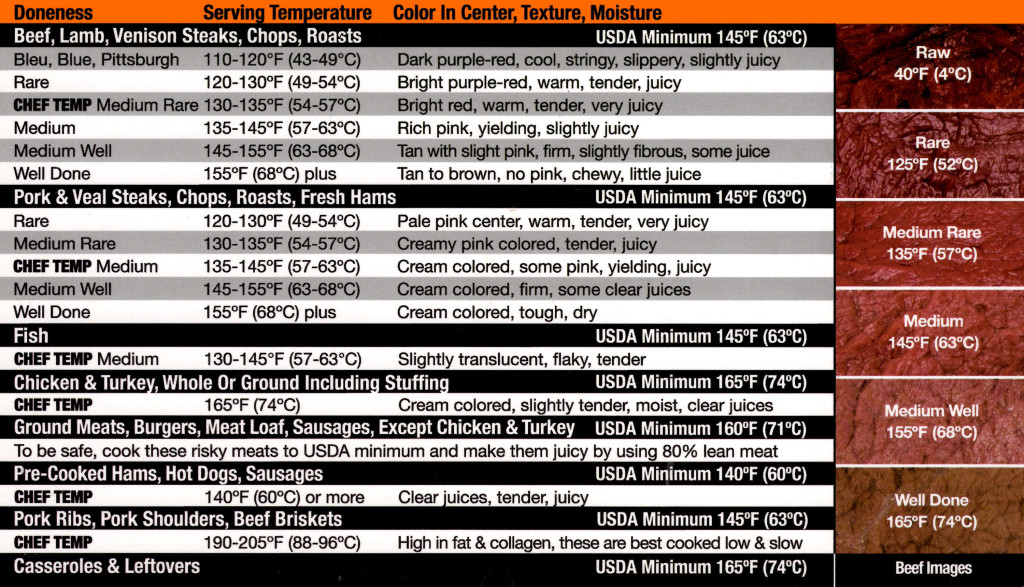

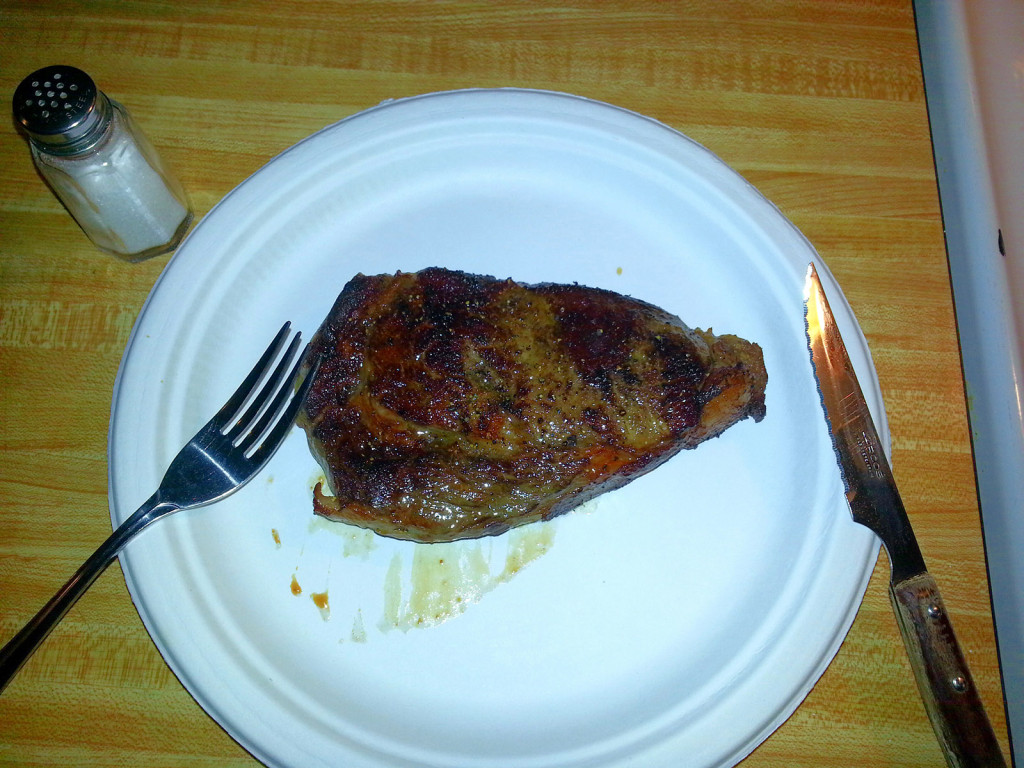
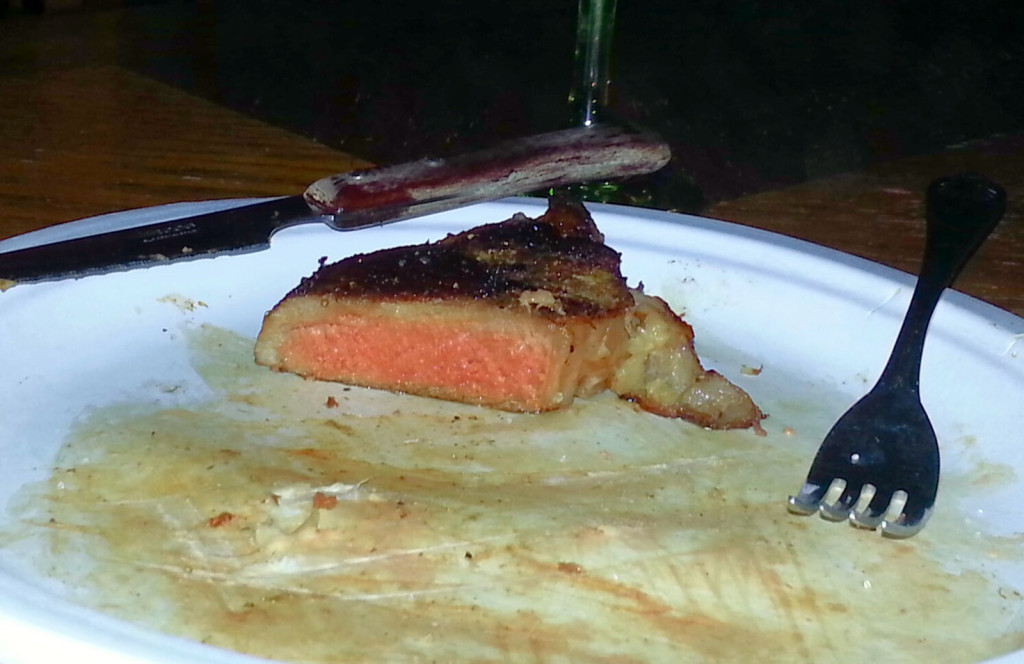
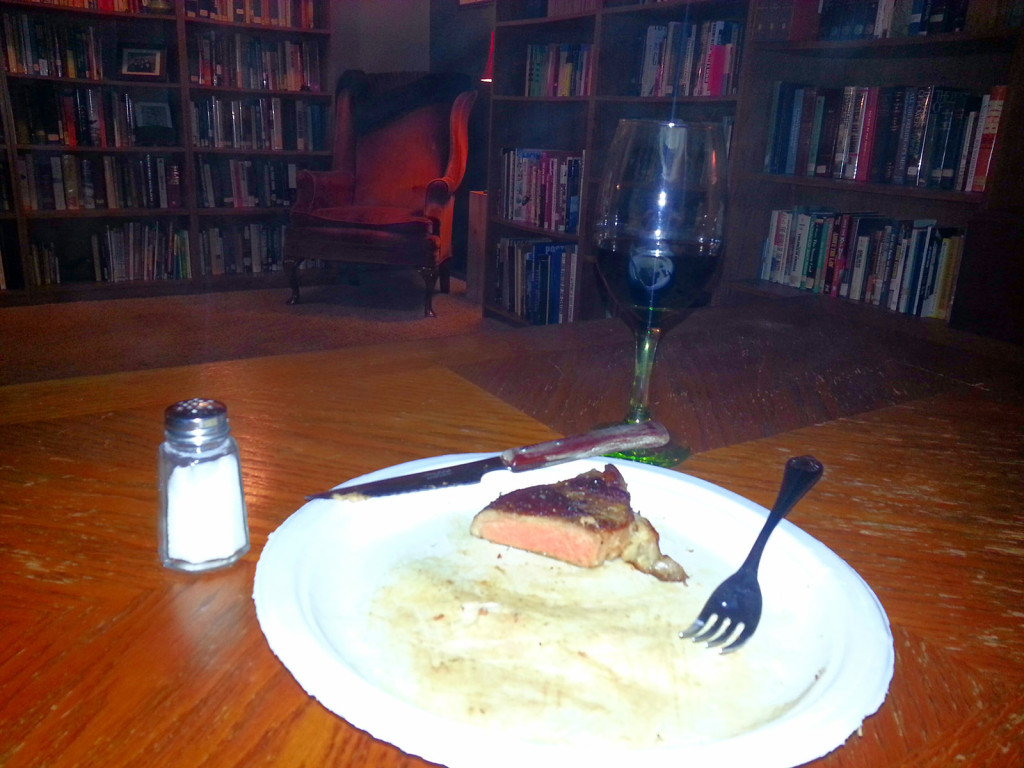
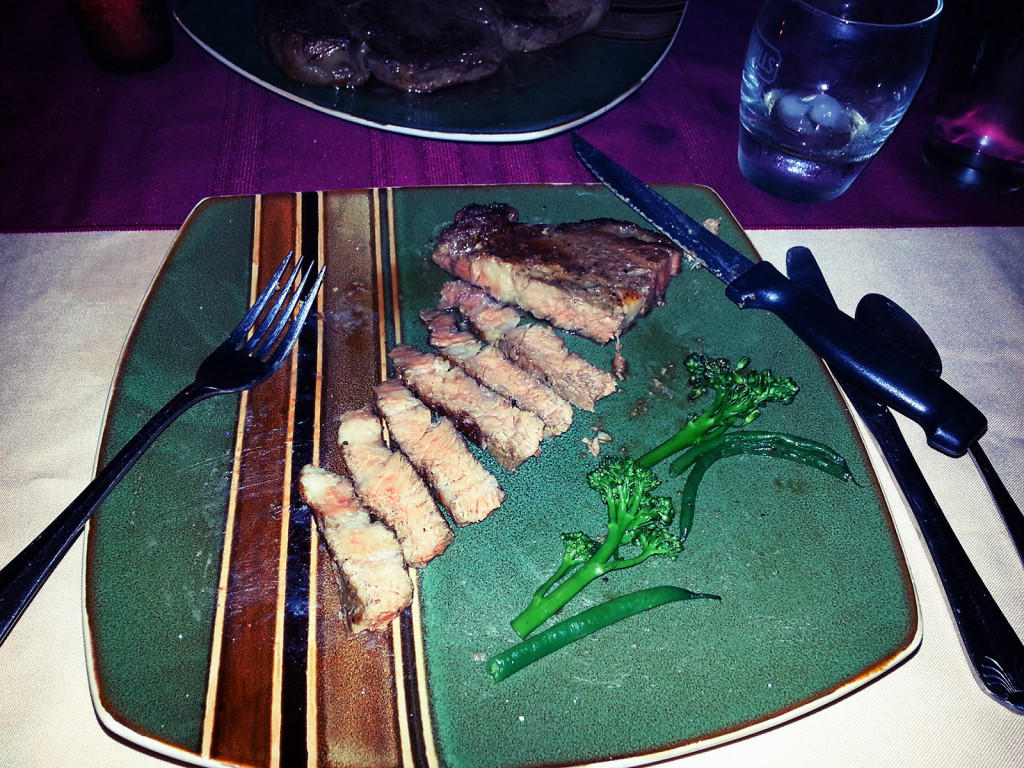
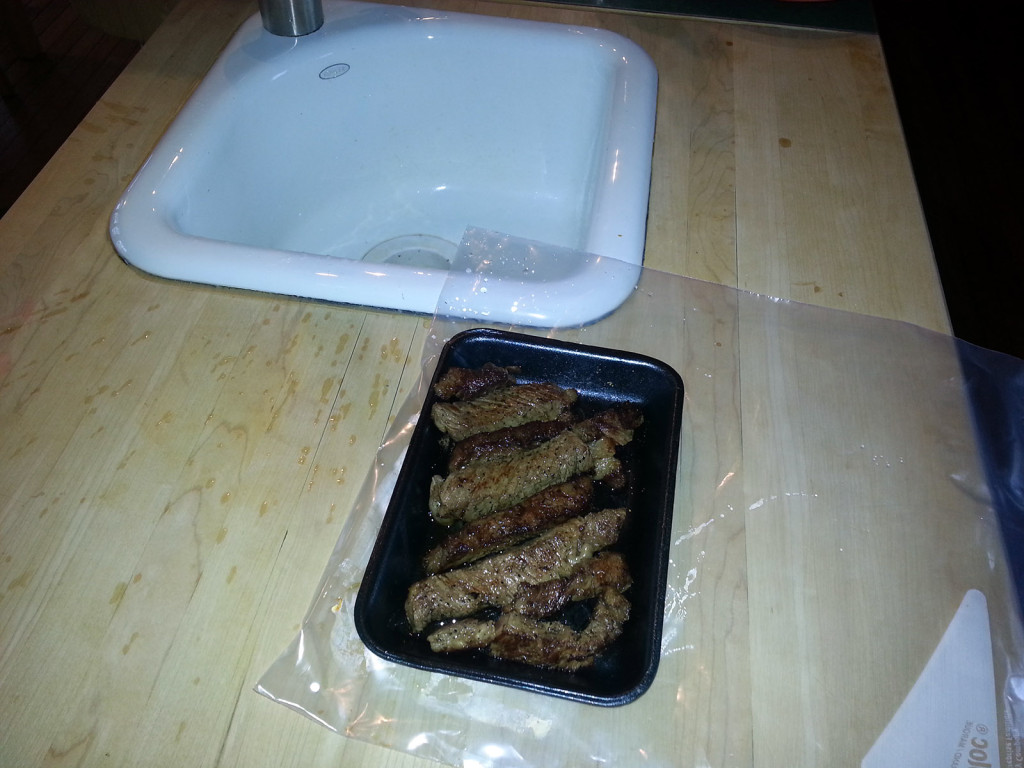
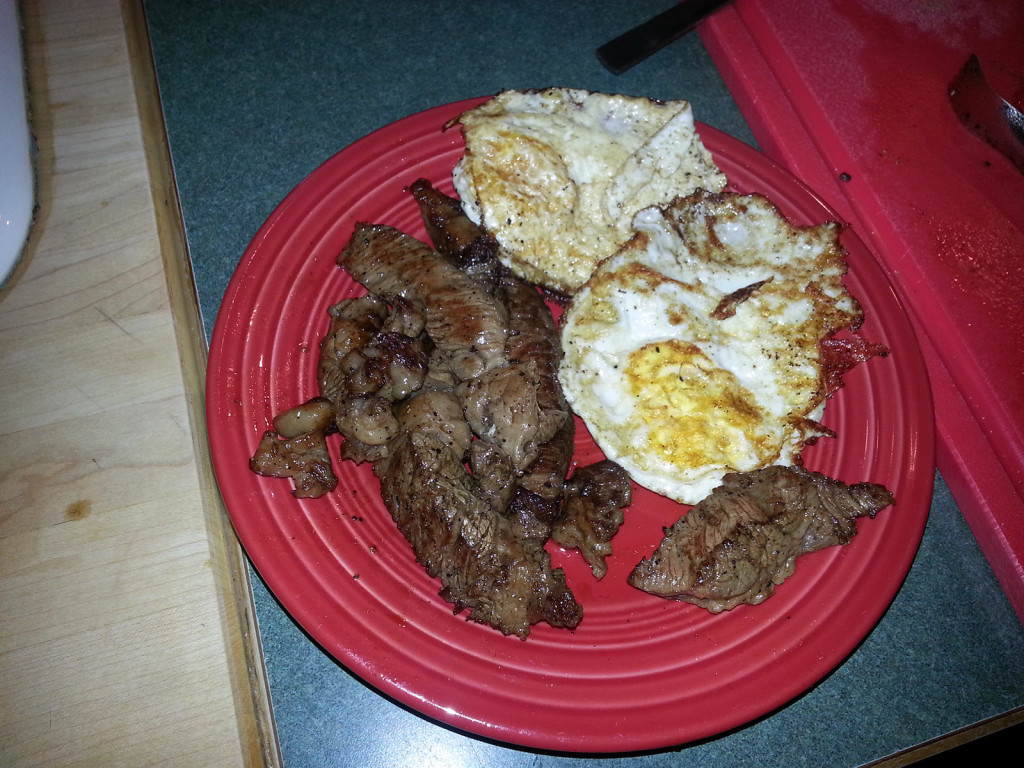
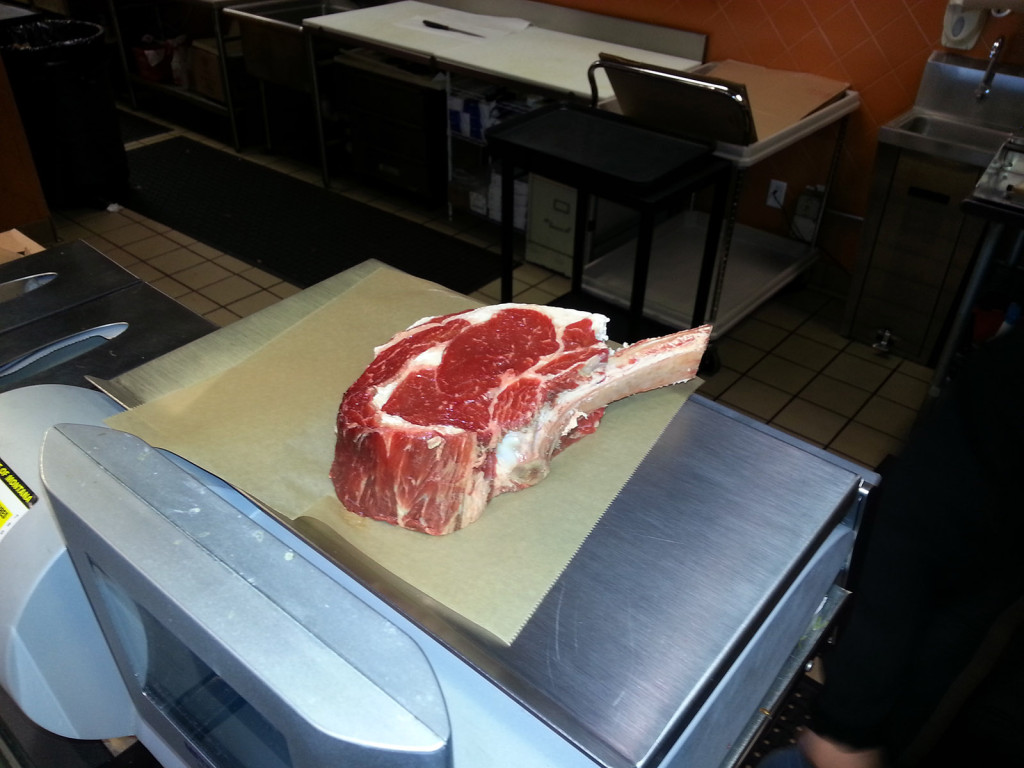
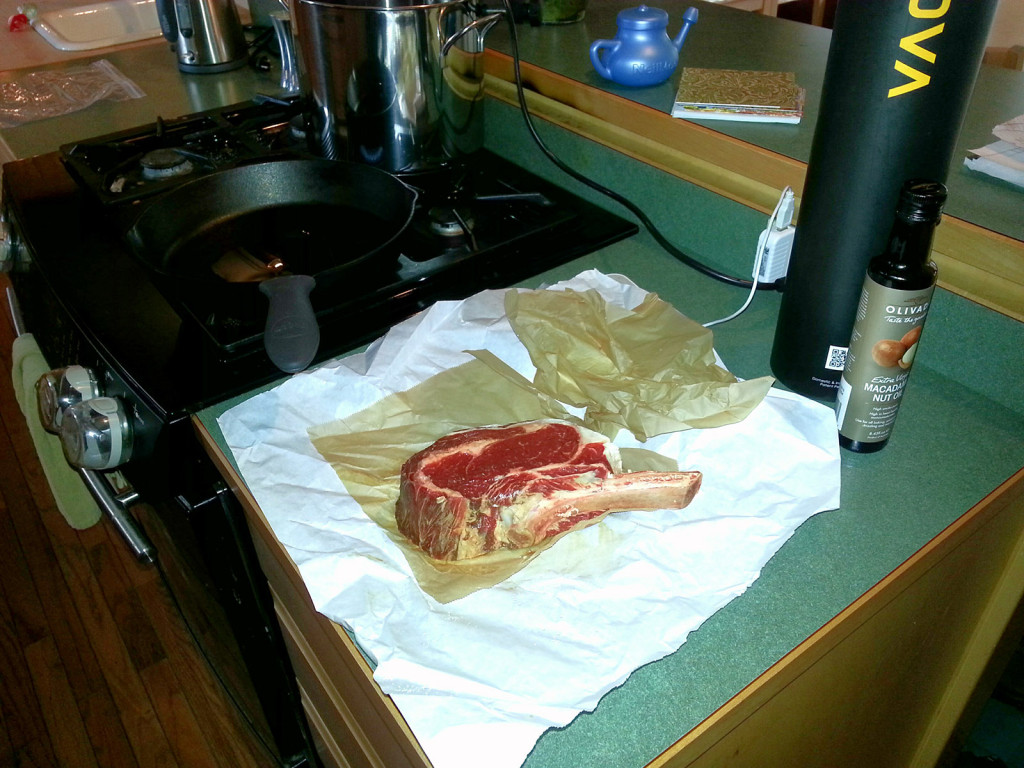
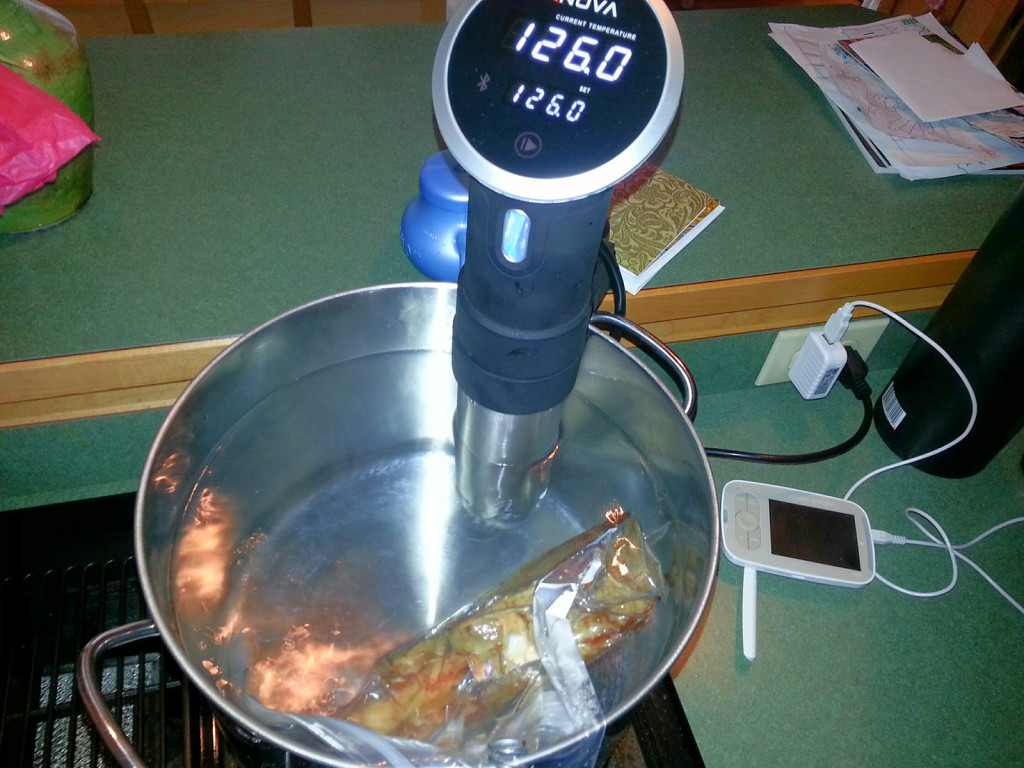
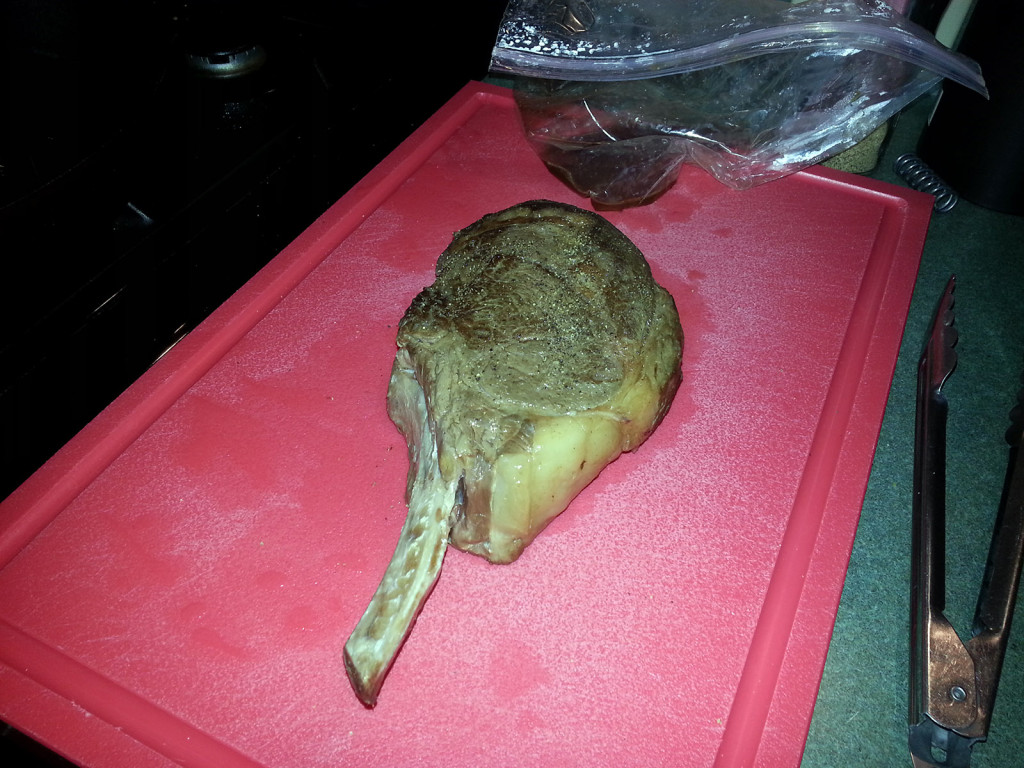
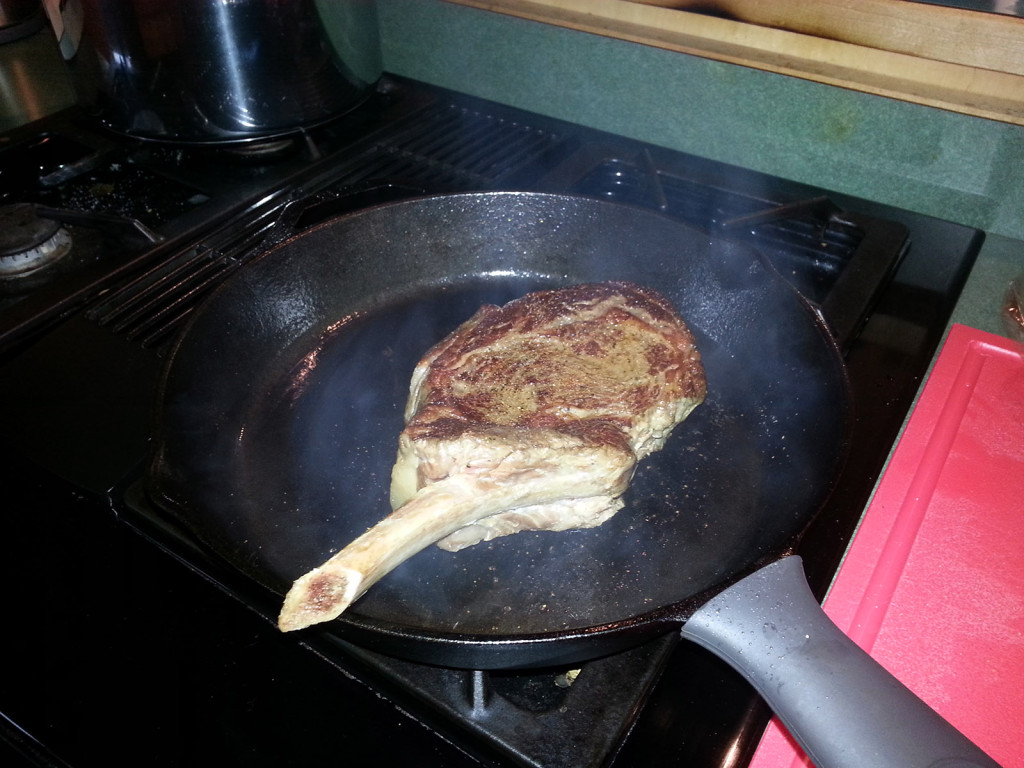
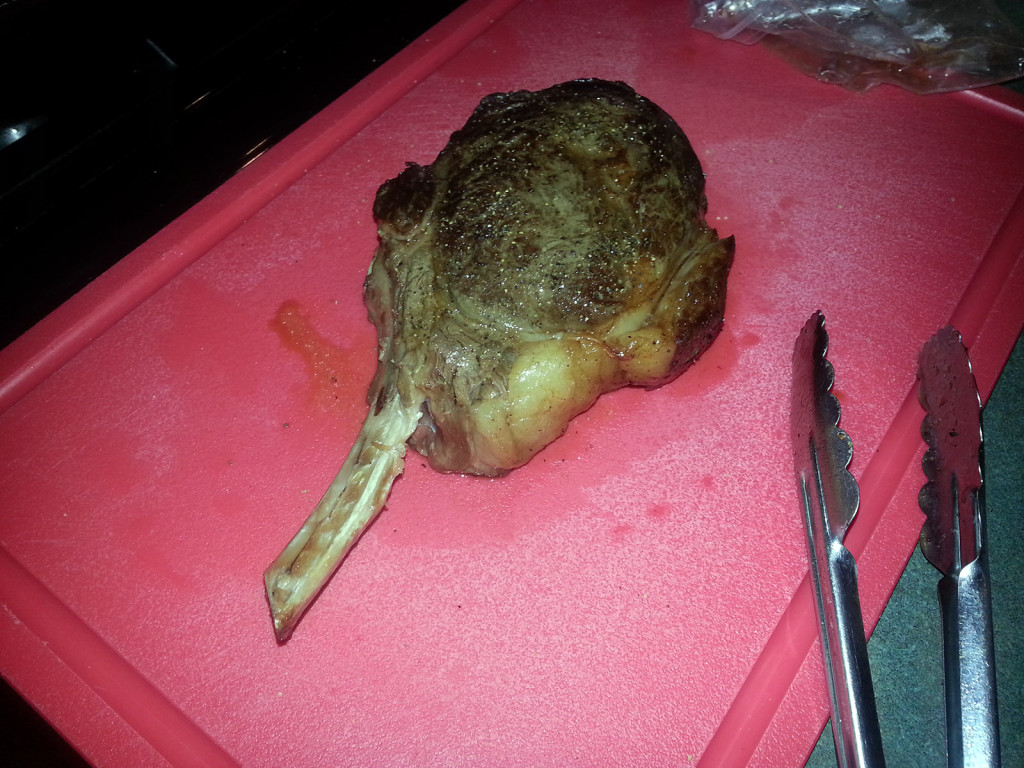
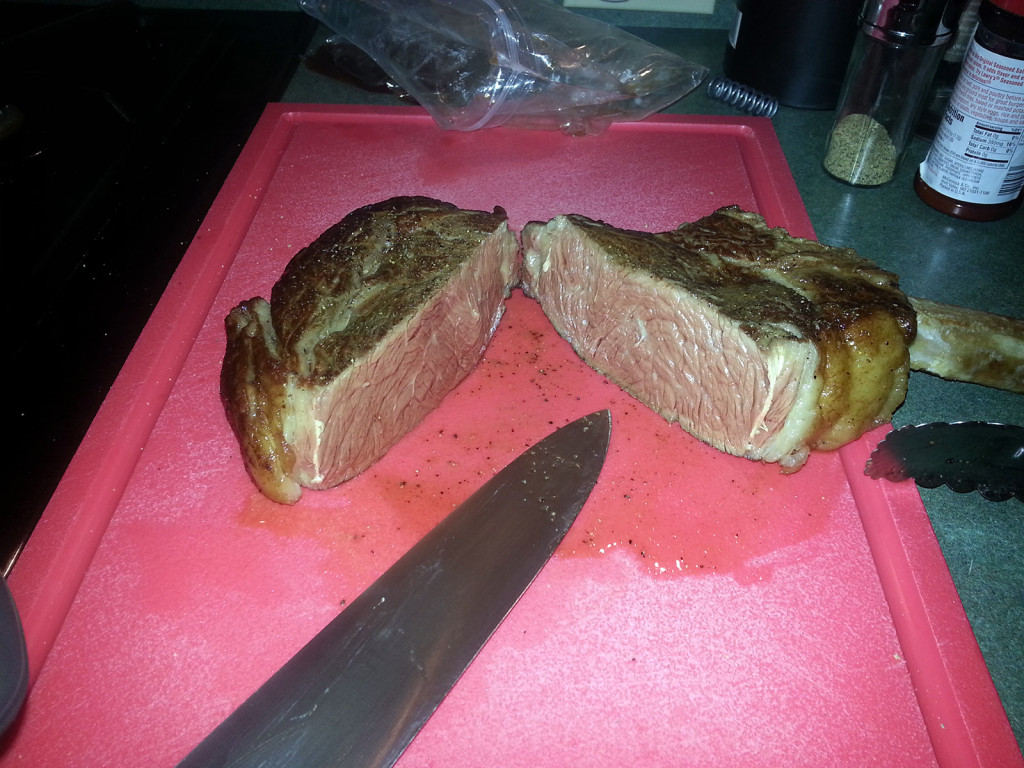
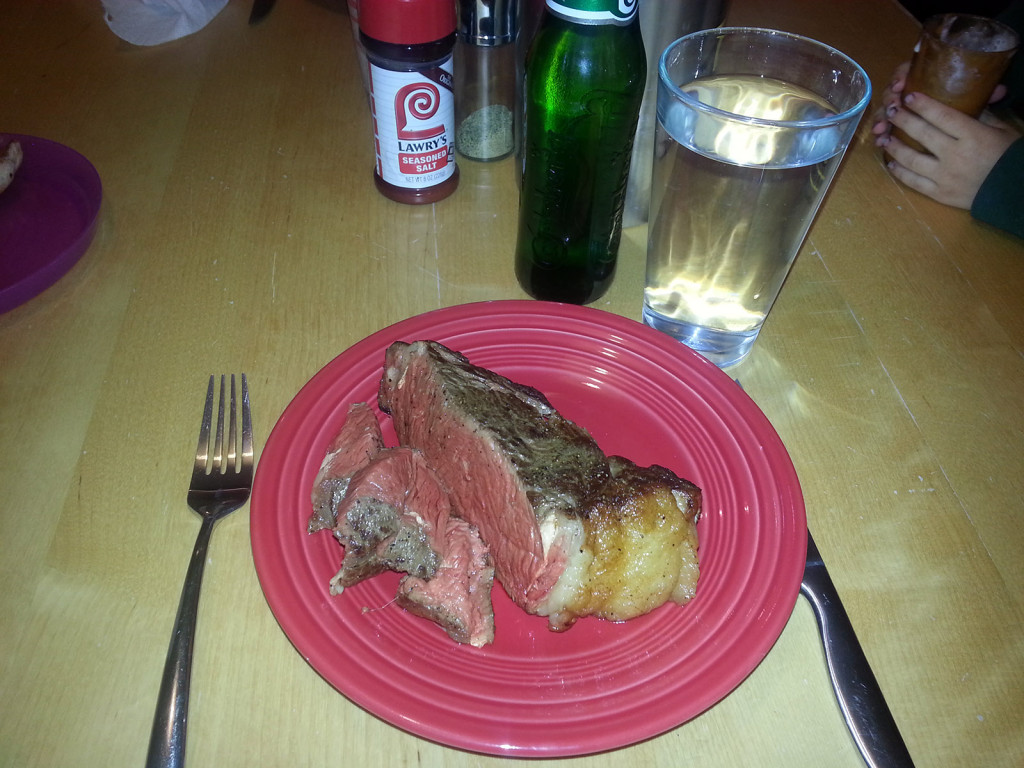
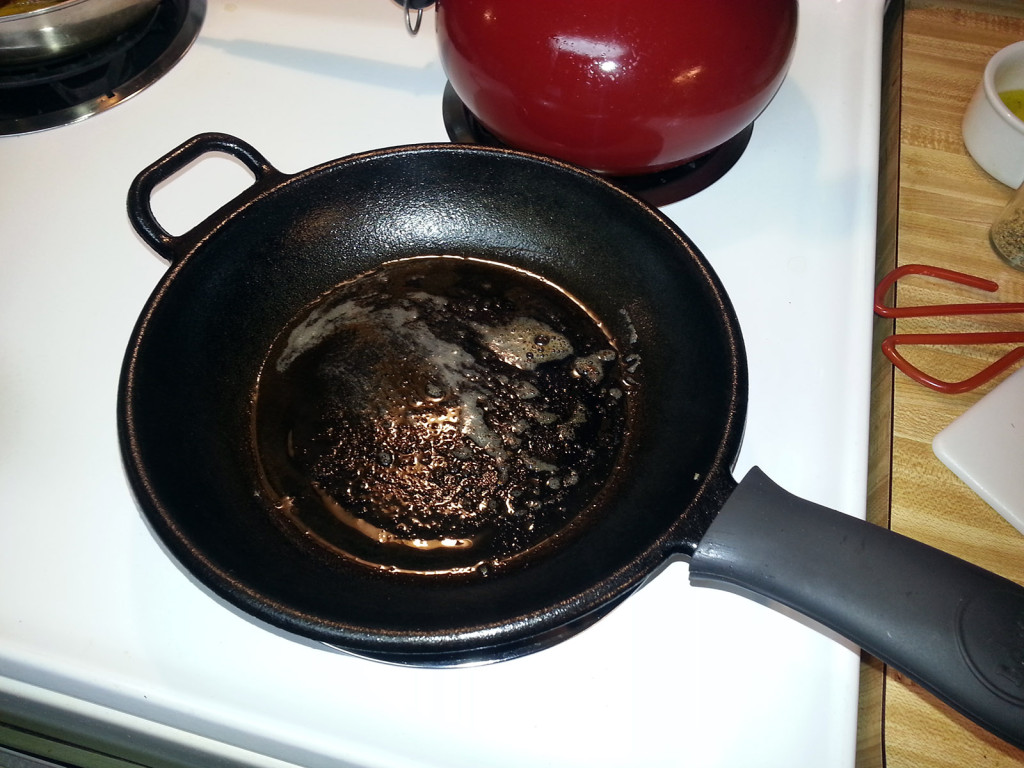
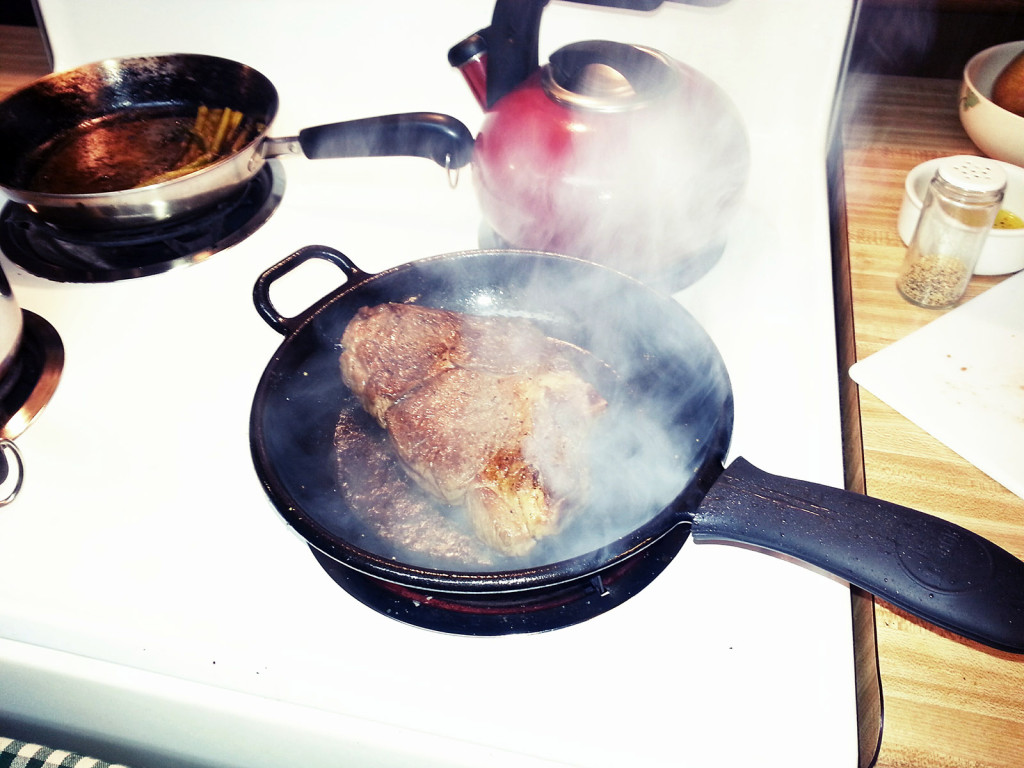
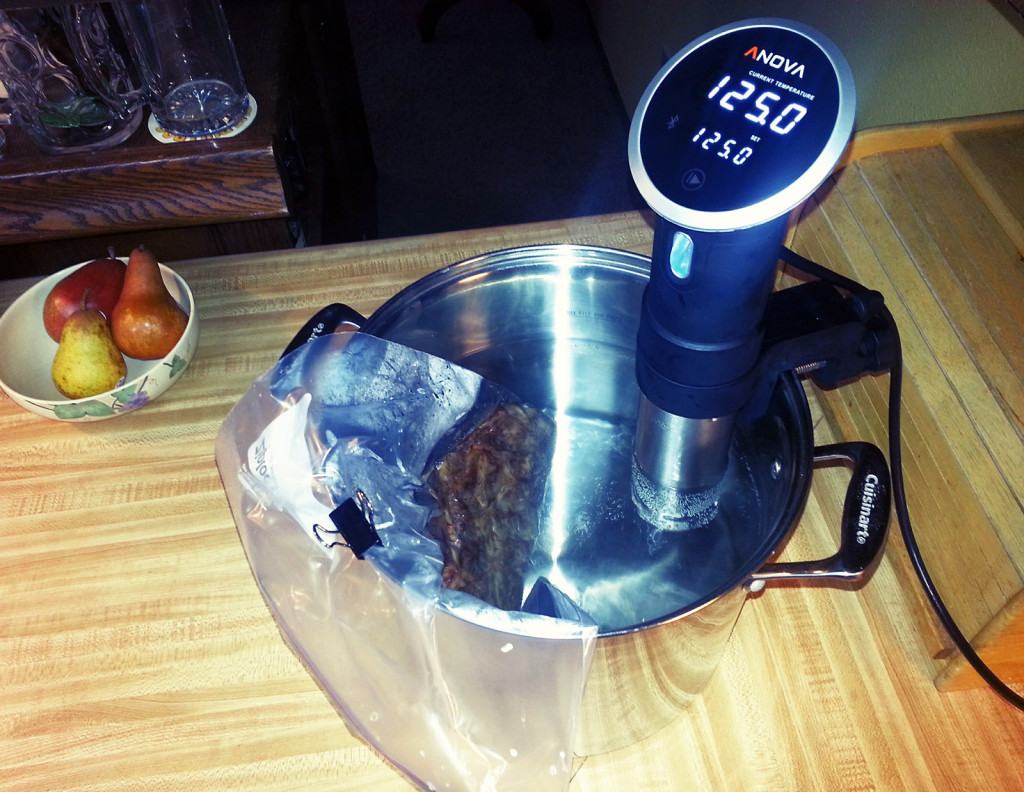
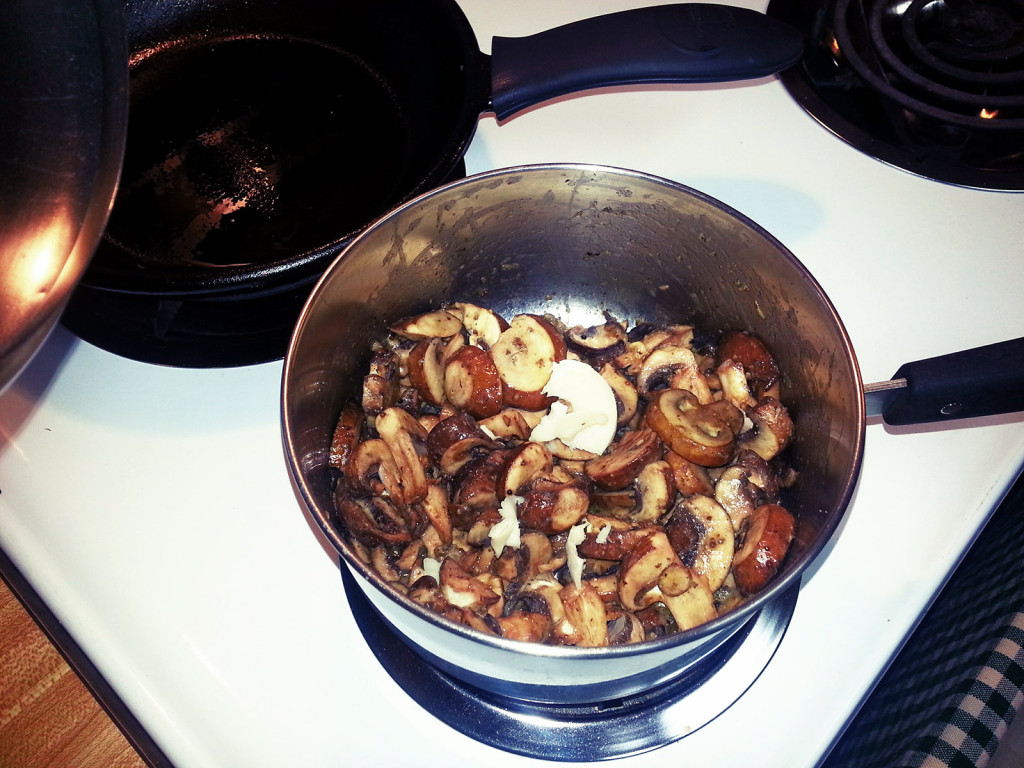
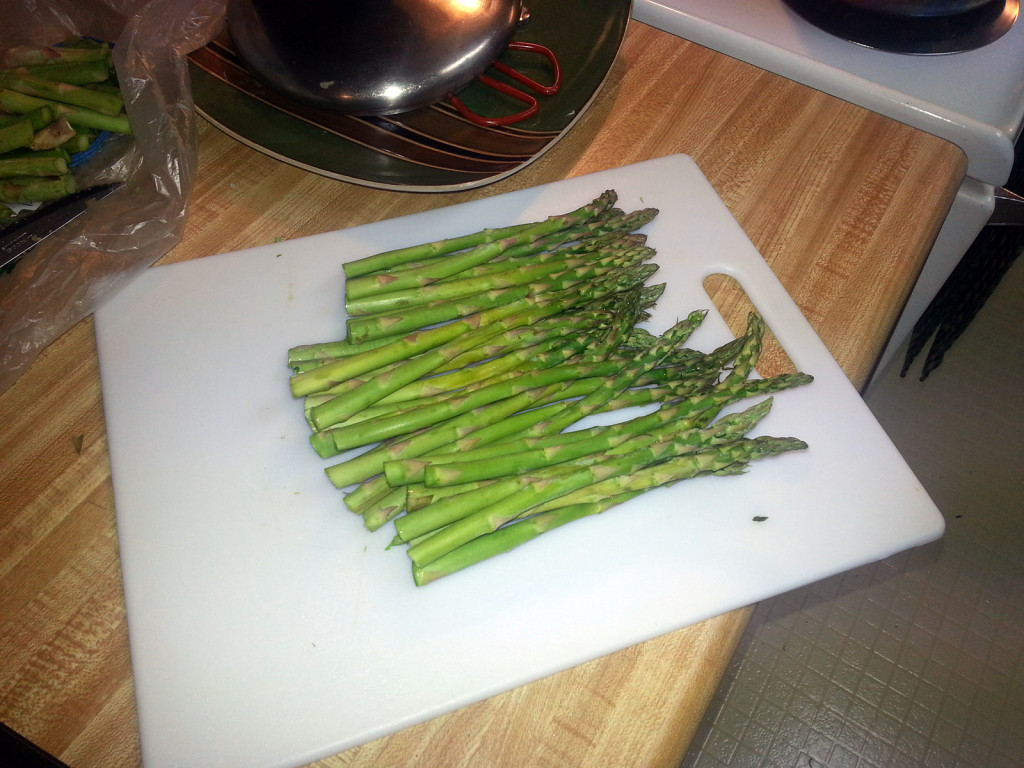
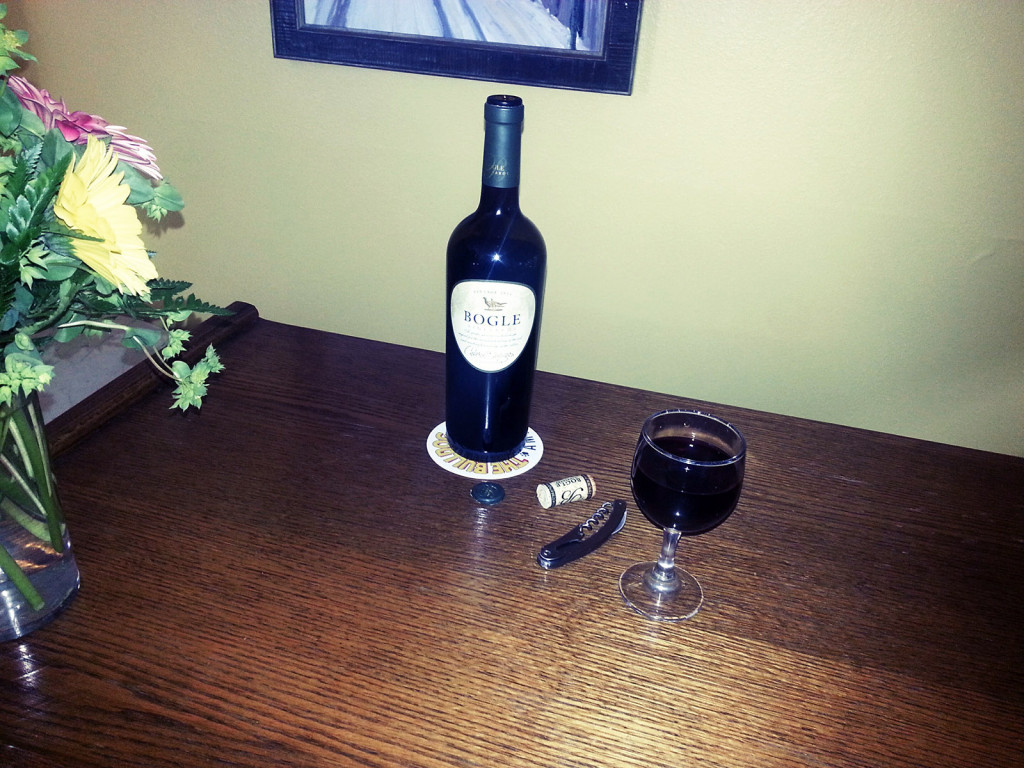
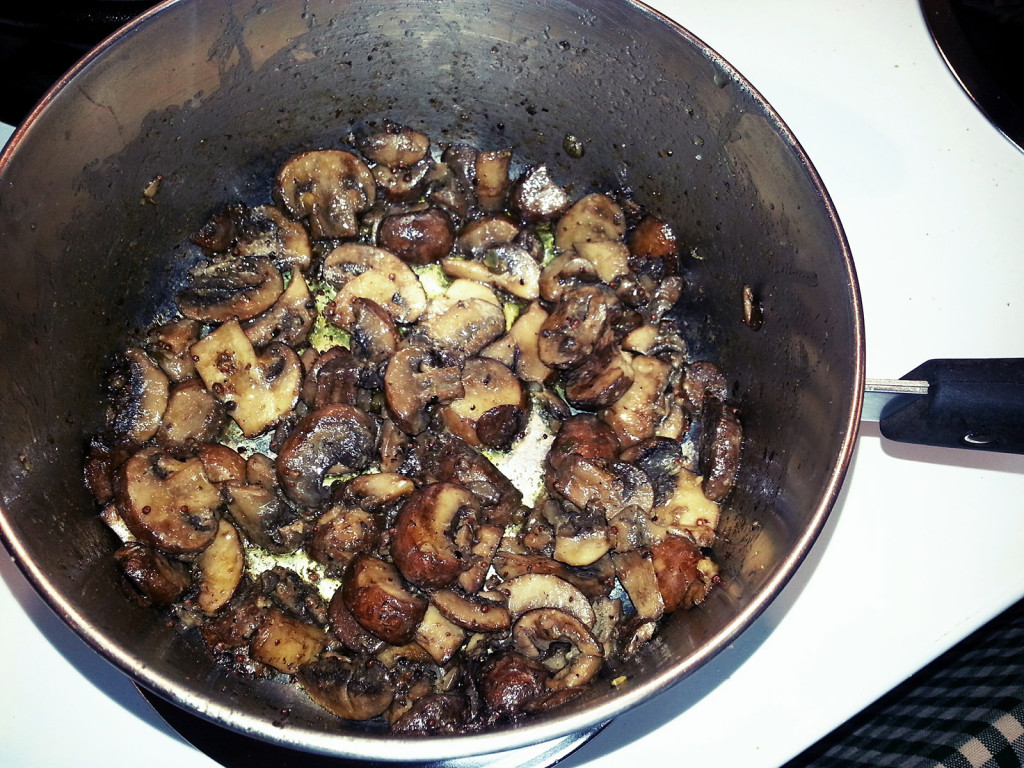
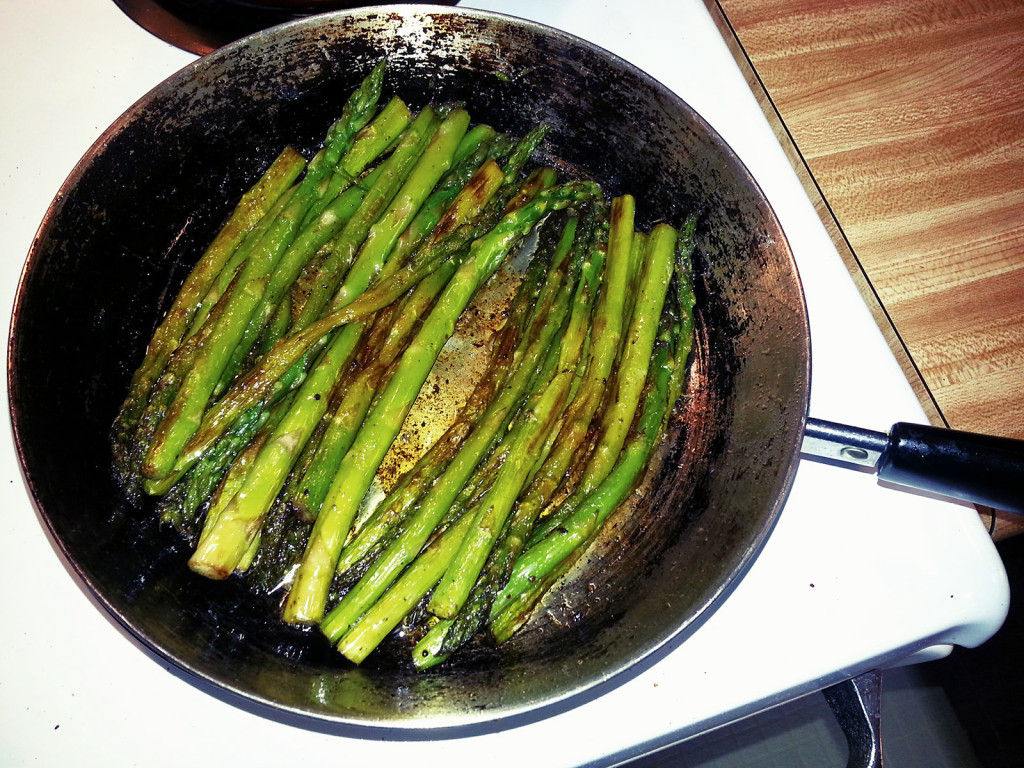
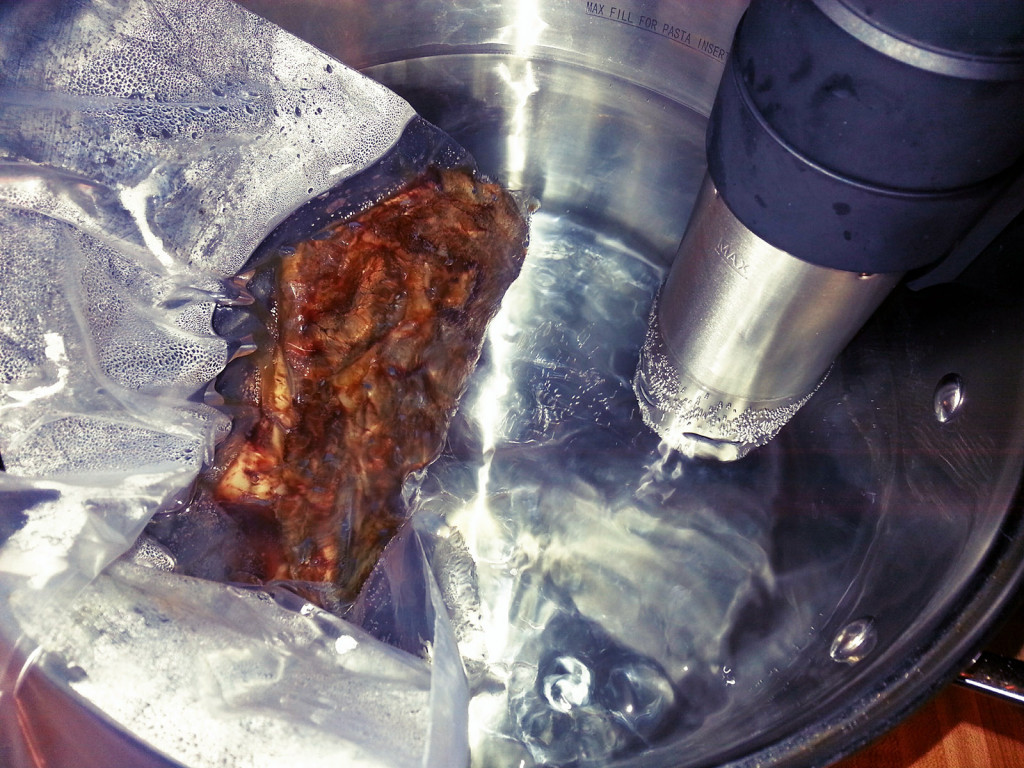
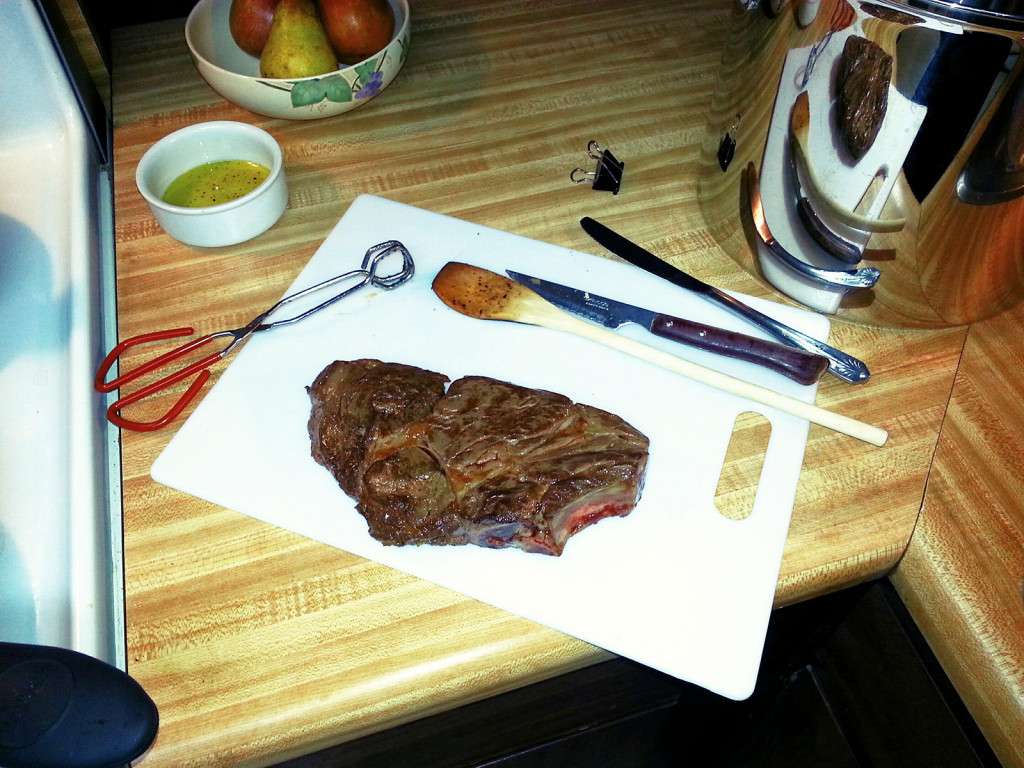
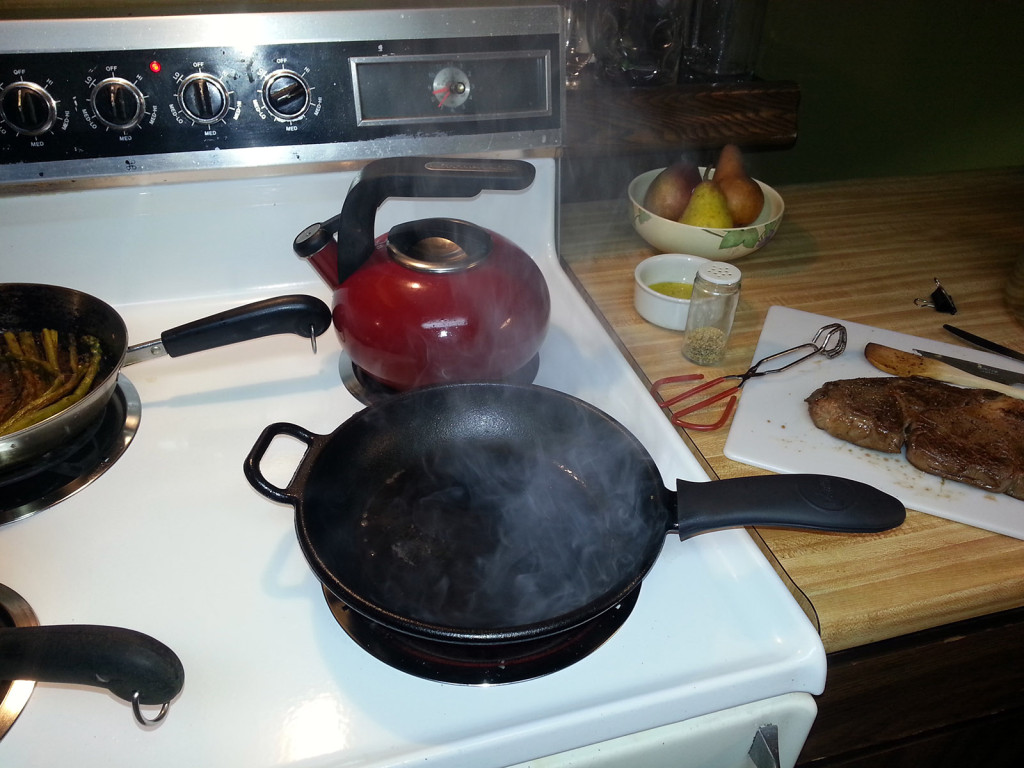
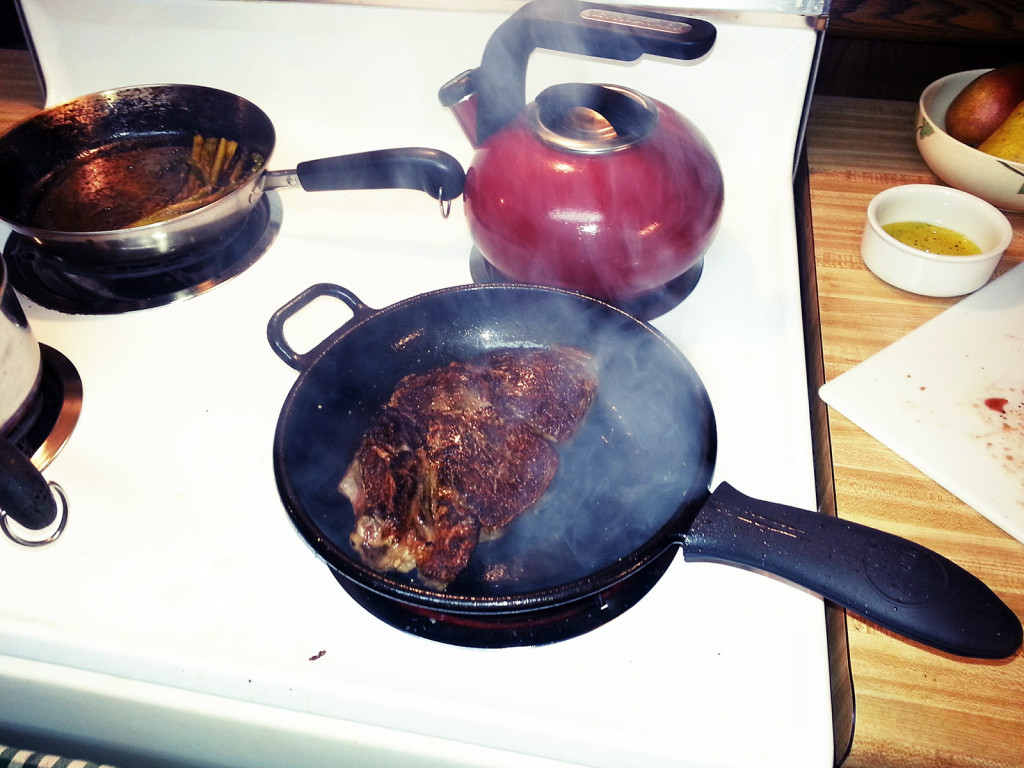
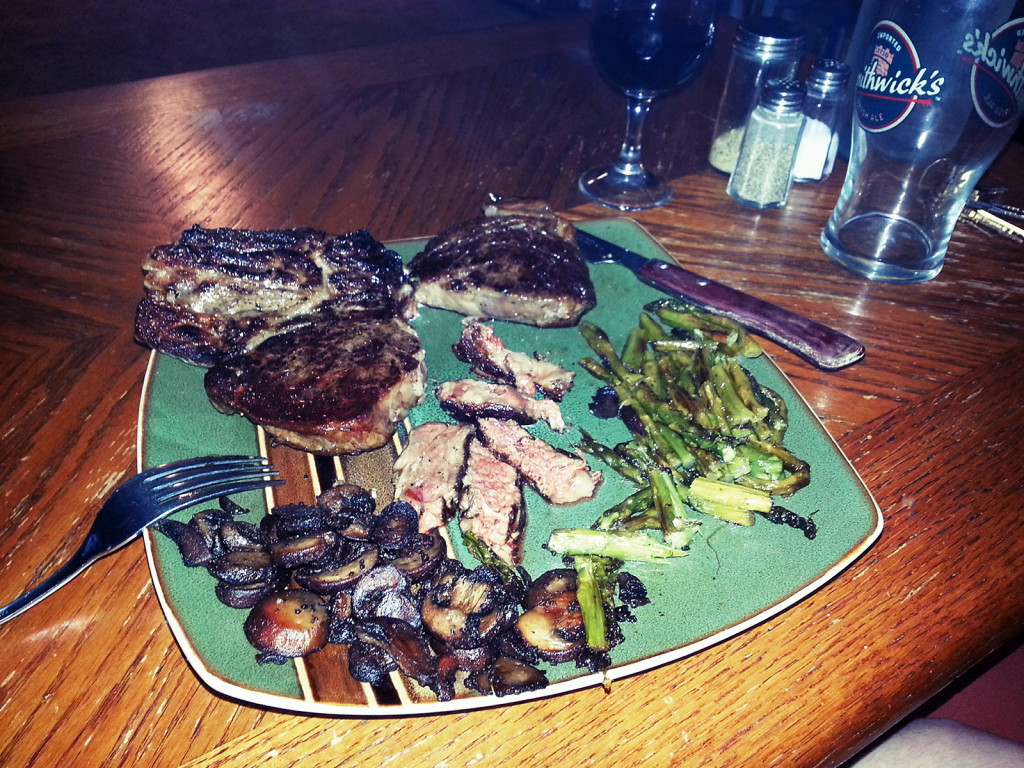
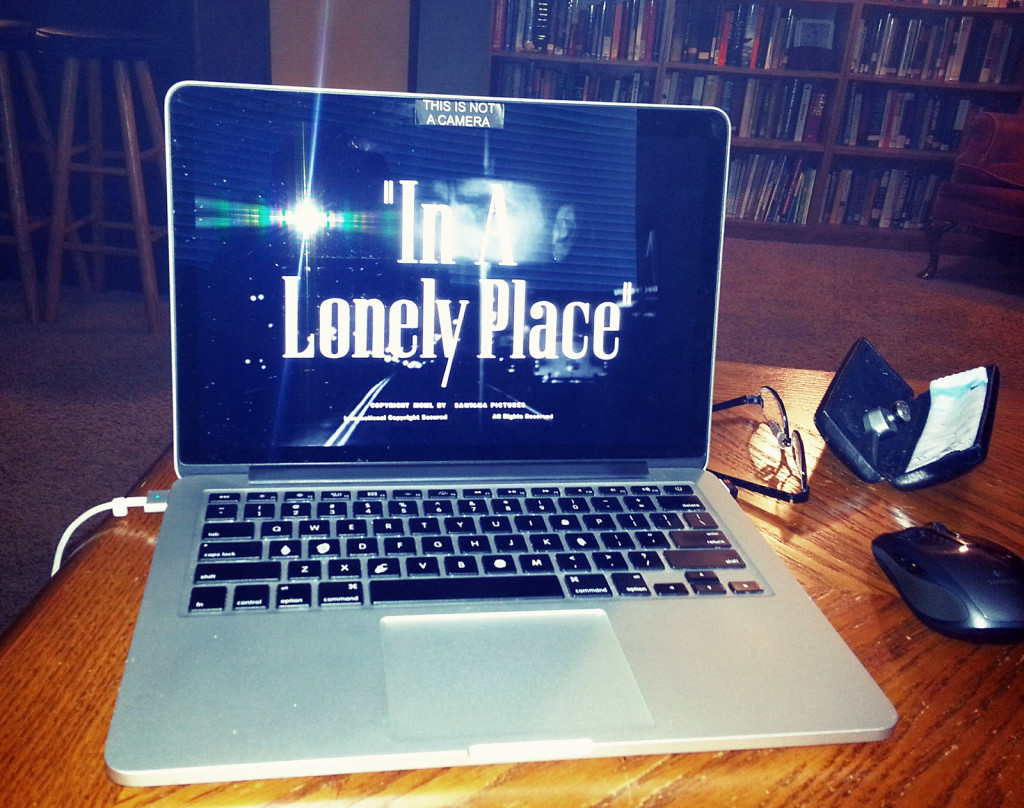

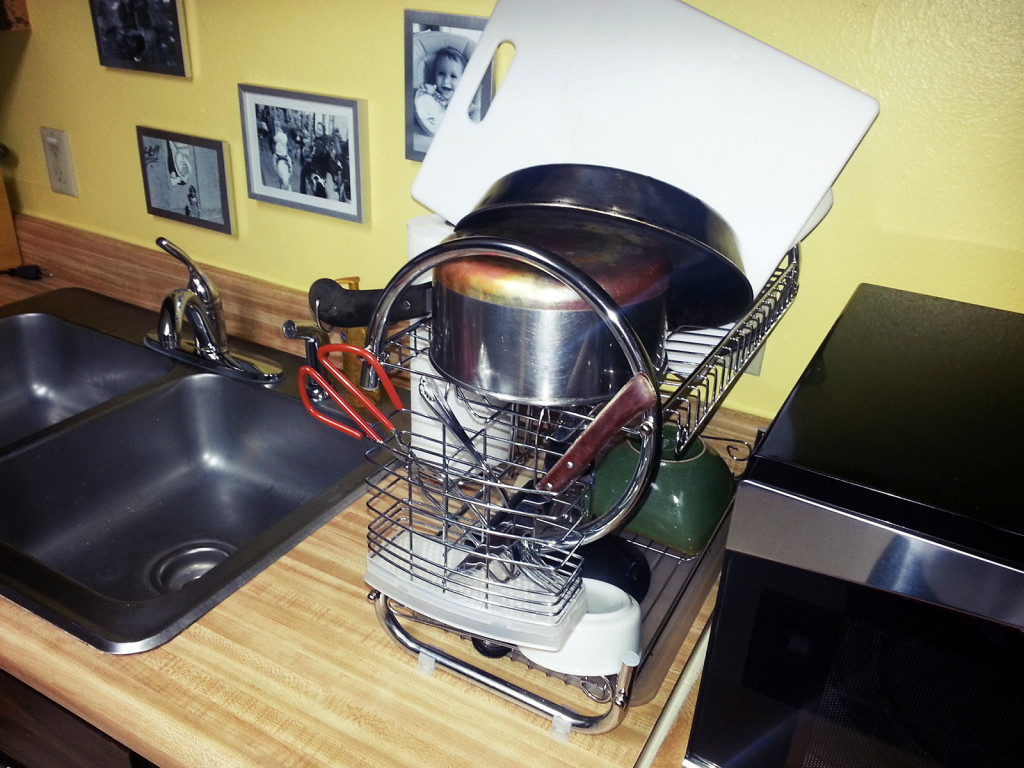
One Comment
Looks like you have mastered the technique perfectly., I am envious